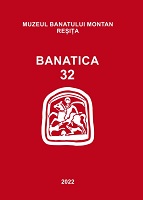RECONSTITUIREA UNUI FRAGMENT DE ARTĂ BAROCĂ EUROPEANĂ – PICTURA PLAFONANTĂ A BISERICII FRANCISCANE SF. NEPOMUC DIN TIMIȘOARA
A FRAGMENT OF EUROPEAN BAROQUE ART – THE CEILING PAINTING OF THE FRANCISCAN CHURCH OF ST. NEPOMUK IN TIMIȘOARA
Author(s): Mihaela VlăsceanuSubject(s): History of Church(es), Visual Arts, History of Art
Published by: Editura Mega Print SRL
Keywords: church of St. Nepomuk; ceiling painting; European characteristics; Franciscan Baroque;
Summary/Abstract: The Franciscans and the Jesuits before them introduced a model of sacred theater through the built churches and although the present study does not make an analysis of this concept, it ideologically links the formulation to the internal organization of the church of St. Nepomuk, which received Central European models with similar structures of that time. In our attempt to reconstruct the fresco painting of the two vaults we came across many novelty archive informations and through a comparative analysis managed to identify the themes of the ceiling painting which are deprived of chromatics, as the image sources used in this attempt were black and white photos taken in 1908 by a Piarist pupil (Konrad Baitz). The mural composition is probably the first ceiling painting of the Banat province, genre throughout which the Franciscans will envisions dogma reflecting the iconography of educated clergy (the Bosnian Franciscans), promoters of a late Baroque style. Faith is mediated by the characters represented, whether they are evangelists, apostles, angels, allegories, virtues (borrowed as an echo of a classicism revived by the late phase of the Baroque style), scenes from the Christological or Marial cycle, holy martyrs (Nepomuc to whom the Franciscans dedicate the monument). Compositions in trompe l’ oeil, both themes rendered on the vault, Agnus Dei or the vision of John of Patmos are surrounded by Doctor Ecclesiae universalis: Ambrosius of Milan (with the hive as an attribute) and Jerome (with the lion), Gregory the Great, Augustine of Hippona Doctor Gratiae with a burning heart as a Christological symbol and the theological cardinal virtues (Love, Faith, Hope and Pax Christiana).
Journal: BANATICA
- Issue Year: 1/2022
- Issue No: 32
- Page Range: 315-333
- Page Count: 19
- Language: Romanian

